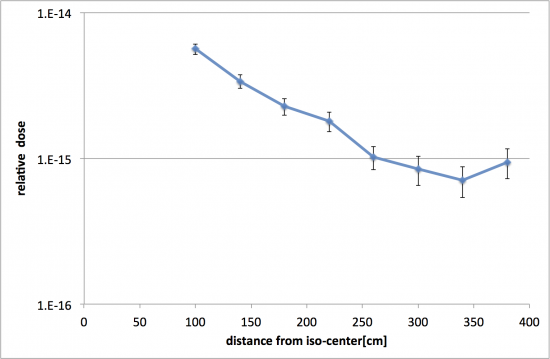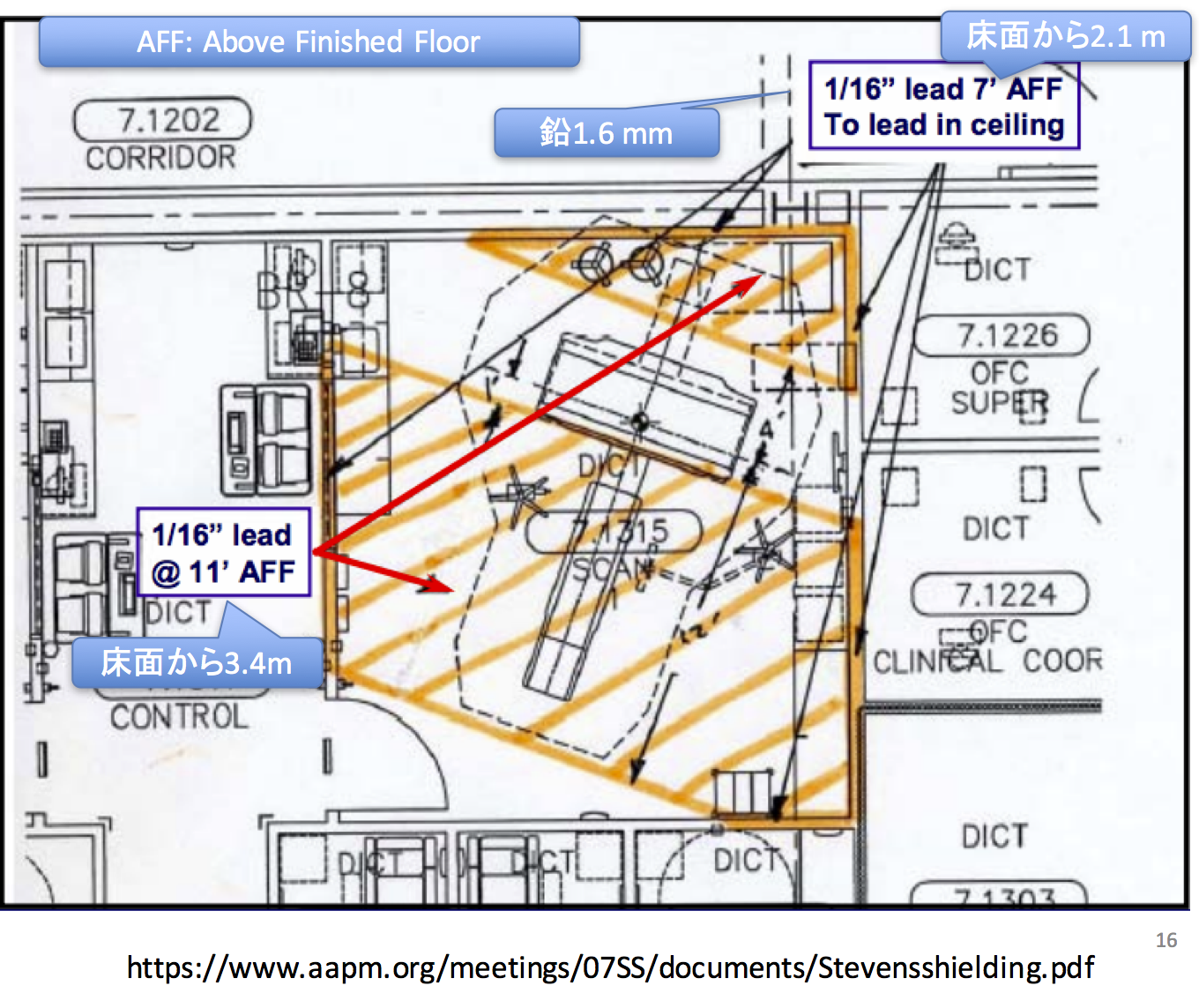No. 299 壁の位置別の評価(検討中課題)
ある面の壁で場所によって入射する線量が大きく異なると考えられる場合に、場所別に必要な遮蔽の厚みを評価して構いませんか?
X線装置での従来の考え方
利用線錐、散乱線、X線容器からの漏えい線のそれぞれで安全側に設定する。
利用線錐方向が複数ある場合には各評価面について、利用線錐、散乱線、X線容器からの漏えい線のそれぞれを算定する。
例
日本アイソトープ協会.改訂版 医療放射線管理の実践マニュアル.2002年
課題
ある面で場所によって線量が大きく異なる場合に場所毎の特性を考慮して合理的に評価してもよいのではないか。
適用想定例
線源に近い位置である面での線量を評価し、端にある扉に入射する線量が相対的に小さい場合、扉で必要な厚みを扉の位置を考慮して計算する。
適用例

扉での遮へい厚み評価例
ピットホール
室内の散乱線の影響
床や壁などでの散乱が多く、考慮する遮蔽体(例えば対向遮蔽など)のサイズが小さい場合には、散乱線が回り込むことによる寄与が大きくなることがある。
部屋の隅での線量の増加状況
X線室に直ぐにはいると危険?
壁からの散乱線の影響

線源位置などの変化(設計と施工の乖離など)
ガントリの考慮例
AAPM
NCRP report 147
This methodology assumes an isotropic scattered radiation distribution, rather than the “hourglass” shaped isodose distributions typically given by the CT manufacturers. In the plane of x-ray tube rotation, scattered radiation is greatly reduced due to attenuation by the gantry hardware. In fact, scattered radiation levels do not reach maximum value until an angle of about 30 degrees with this
plane is reached. This will allow use of an obliquity factor (cosθ ) reduction in the shielding thickness for the floor and ceiling if necessary, as discussed by Sutton and Williams (2000). The angle θ is the angle of incidence with the barrier.




